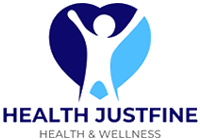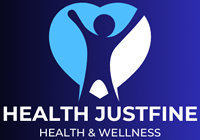Introduction to Recovery and Rest Days.
In the pursuit of fitness goals, it’s easy to focus solely on intense workouts and pushing your limits. However, one critical aspect often overlooked is the importance of recovery and rest days. These days are essential for allowing your body to heal, adapt, and grow stronger. This blog post explores why recovery and rest days are crucial and provides insights into how to optimize them for better fitness outcomes.
Why Recovery and Rest Days are Crucial.
Recovery and rest days are not just about taking a break from exercise; they are an integral part of any effective fitness routine. When you engage in physical activity, especially high-intensity workouts, your muscles undergo microscopic damage. Recovery periods allow your muscles to repair and strengthen, reducing the risk of injury and enhancing overall performance.

Benefits of Proper Recovery.
- Muscle Repair and Growth: During exercise, muscle fibers experience tiny tears. Proper recovery, including rest days, provides the necessary time for these fibers to repair and grow stronger, leading to increased muscle mass and strength.
- Prevention of Overtraining: Overtraining can lead to fatigue, decreased performance, and a higher risk of injuries. Incorporating recovery and rest days helps prevent overtraining by allowing your body to recuperate fully.
- Improved Performance: Well-rested muscles perform better. Regular rest days help maintain optimal performance levels, enabling you to train harder and more effectively when you do exercise.
- Mental Health Benefits: Taking time off from your workout routine can reduce stress and mental fatigue. Rest days give you a mental break, helping to keep motivation levels high and preventing burnout.
Signs You Need a Rest Day.
- Persistent Fatigue: Feeling unusually tired despite adequate sleep could be a sign that your body needs more rest. Persistent fatigue can negatively impact your workouts and overall health.
- Decreased Performance: If you notice a decline in your performance or struggle to complete your usual workouts, it might be time for a rest day. Ignoring these signs can lead to overtraining and injury.
- Muscle Soreness: While some muscle soreness is normal after a workout, persistent or severe soreness indicates that your muscles need more time to recover.
- Mood Changes: Irritability, mood swings, and lack of motivation can be signs that you need a break. Mental fatigue often accompanies physical fatigue, and rest days can help rejuvenate your mind and body.
Tips for Effective Recovery.
- Prioritize Sleep: Sleep is one of the most important aspects of recovery. Aim for 7-9 hours of quality sleep each night to allow your body to heal and recharge.
- Stay Hydrated: Proper hydration is crucial for muscle recovery and overall health. Drink plenty of water throughout the day, especially after workouts.
- Nutrition: Consume a balanced diet rich in protein, healthy fats, and carbohydrates to support muscle repair and growth. Consider post-workout nutrition like protein shakes or recovery drinks.
- Active Recovery: Engage in low-intensity activities such as walking, yoga, or stretching on rest days. Active recovery promotes blood flow and helps reduce muscle stiffness.
- Listen to Your Body: Pay attention to how your body feels and adjust your training schedule accordingly. If you need an extra rest day, take it.
- Massage and Foam Rolling: Incorporate self-massage techniques and foam rolling to alleviate muscle tension and enhance recovery.
Conclusion.
Understanding the importance of recovery and rest days is crucial for anyone serious about fitness. These days are not a sign of weakness but a necessary part of any effective training regimen. By prioritizing rest and recovery, you can prevent injuries, enhance performance, and maintain long-term motivation. Listen to your body, give it the rest it deserves, and you’ll see better results in your fitness journey.






Add a Comment